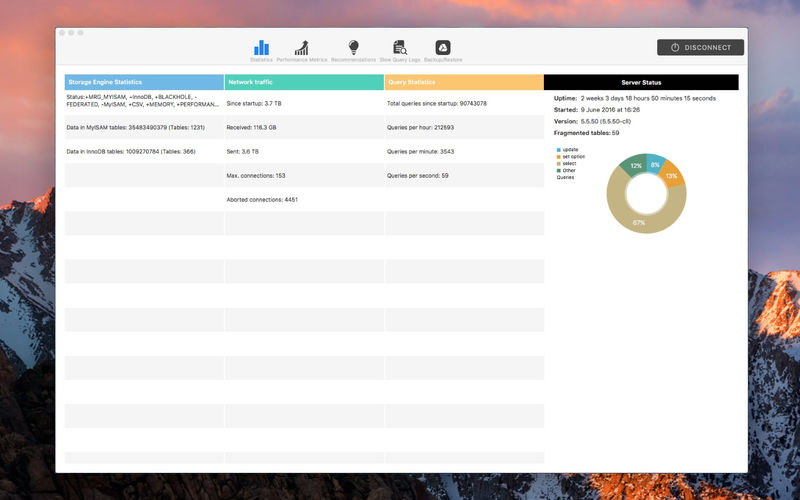

- #MYSQL OPTIMIZER SETTINGS PASSWORD#
- #MYSQL OPTIMIZER SETTINGS SERIES#
- #MYSQL OPTIMIZER SETTINGS WINDOWS#
With solid indexes in place, you can move your focus to buffer pool size, which can work to your advantage by allowing you to increase the speed of your reads… as long as it’s configured correctly. In case you missed it, you can read it here.įor our second post in the series, I’ll be sharing how you can maximize performance through buffer pool size. Our first post covered indexing - which shared how you can leverage indexing to improve search query performance, as well as specific tips on how you can improve indexing across your MySQL environment.
#MYSQL OPTIMIZER SETTINGS SERIES#
Don't go above 256M.Last week, we kicked off our three-part series highlighting the three ways that you can optimize your MySQL performance. Innodb_log_file_size = 128M # Delete the ib_logfile0 & ib_logfile1 files in /var/lib/mysql whenever you change this, even the first time you set it up, as the default value is 8M. Use Tuning Primer or MySQL Tuner to adjust accordingly. Innodb_buffer_pool_size = 2G # Use up to 70-80% of RAM & optionally check if /proc/sys/vm/swappiness is set to 0. # binary logging - not required for slaves, but recommended
#MYSQL OPTIMIZER SETTINGS PASSWORD#
# The password the slave will authenticate with when connecting to # The username the slave will use for authentication when connecting # The replication master for this slave - required # but will not function as a slave if omitted # required unique id between 2 and 2^32 - 1 # (commented) and instead use CHANGE MASTER TO (see above) # For that reason, you may want to leave the lines below untouched # the slave server, delete and restart the slaver server. # overridden by the content of the file, unless you shutdown # change in this file to the variables' values below will be ignored and # connect), the slave will create a file, and any later # if you mistyped the password in master-password and the slave fails to # start replication for the first time (even unsuccessfully, for example However, in case you choose this method, then # To configure this host as a replication slave, you can choose between # Replication Slave (comment out master section to use this) # but will not function as a master if omitted # defaults to 1 if master-host is not set # required unique id between 1 and 2^32 - 1 # binary logging format - mixed recommended # binary logging is required for replication # (via the "enable-named-pipe" option) will render mysqld useless!
#MYSQL OPTIMIZER SETTINGS WINDOWS#
# Note that using this option without enabling named pipes on Windows # All interaction with mysqld must be made via Unix sockets or named pipes.

# if all processes that need to connect to mysqld run on the same host. # Point the following paths to different dedicated disks

# Try number of CPU's x 2 for thread_concurrency # Here follows entries for some specific programs # Note that if there is NO comment beside a setting, then you don't need to adjust it. # To fine tune these settings for your system, use MySQL DB diagnostics tools like: # If you have less or more resources available you MUST adjust accordingly to save CPU, RAM and disk I/O usage. # The settings provided below are a starting point for a 24GB RAM server with 8 CPU cores. # Optimized MySQL configuration for cPanel servers by Kani Baspinar - Updated June 2016


 0 kommentar(er)
0 kommentar(er)
